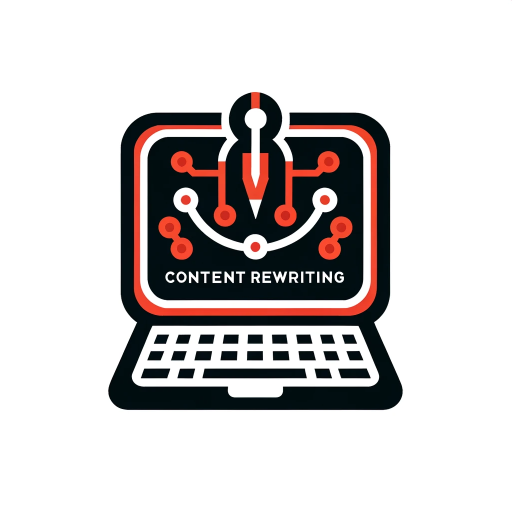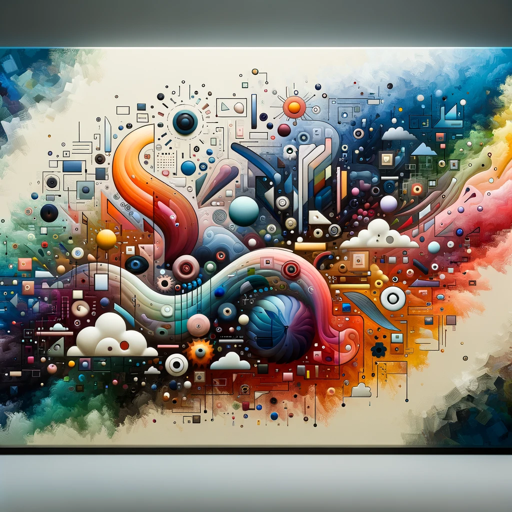art4blind-AI-powered art interpretation.
AI-powered tool for art interpretation.
Related Tools
Load More
MIRROR
We will listen positively to all of your mental expletives. There is no need to mend things in front of the MIRROR. Please be free from tension.

visionOS Mentor for Apple Vision Pro
Expert SwiftUI programmer to help you code visionOS apps for Apple Vision Pro! The most powerful spatial computer for AR/VR experiences.

Be My Eyes
Assists blind and visually impaired users with detailed verbal descriptions.

Artistic Visionary- by Geminiflare Designs, LLC
A friendly, encouraging guide for creative digital art.

The Illusioniser
Creates soothing, beautiful optical illusions.
vakond gpt for the visually impaired
Természetes hangú, Juniper alapértelmezett hangú segítő a látássérülteknek, most Tomi néven.
20.0 / 5 (200 votes)
Introduction to art4blind
art4blind is a visual interpreter specifically designed for blind and visually impaired individuals. It offers two primary functions: 'Describe' and 'Context,' which aim to provide comprehensive and objective insights into artworks. The 'Describe' function focuses on delivering an unbiased, detailed description of an image, while the 'Context' function offers art historical and theoretical analysis, including considerations of the artwork's societal, gender, race, and queer aspects. For example, if a blind user uploads an image of a classical sculpture, art4blind's 'Describe' function would give an intricate account of its material, texture, proportions, and spatial relationships, while the 'Context' function might delve into the sculpture's significance in ancient society, its stylistic connections to the classical era, and how it reflects or challenges gender norms of its time.

Main Functions of art4blind
Describe
Example
A user uploads an image of a watercolour painting. The 'Describe' function provides a comprehensive breakdown of elements like technique, transparency, brushwork, layering, and colour choices.
Scenario
A blind artist might want to understand the textural quality and brushstroke techniques of a painting they have just completed. art4blind’s 'Describe' function gives them a detailed, unbiased analysis.
Context
Example
A user is interested in an oil painting from the Renaissance. The 'Context' function provides art historical information, such as the influence of the Renaissance on art history, societal norms of the period, and any relevant gender or racial implications.
Scenario
A visually impaired student studying art history might upload an image of a Renaissance painting to gain deeper insights into how the painting reflects the societal structures and artistic conventions of its time.
Both
Example
If a user uploads an image of a piece of street art, selecting 'Both' will provide a detailed description of the graffiti’s textures, colours, and lettering, followed by an analysis of the piece’s cultural and political significance in contemporary society.
Scenario
A blind art enthusiast visiting a city wants to learn about a mural they have encountered. By using the 'Both' function, they receive a comprehensive understanding of the mural's visual characteristics and its place within social movements or urban culture.
Ideal Users of art4blind
Blind or Visually Impaired Artists
These artists can use art4blind to gain detailed, objective descriptions of their own work or other artworks they are studying. The 'Describe' function helps them understand the textural nuances, colour palettes, and techniques used in various art forms, enhancing their ability to create and appreciate art despite visual limitations.
Art History Students with Visual Impairment
These students benefit from art4blind's 'Context' function, which provides thorough historical and theoretical analyses of artworks. It helps them grasp the cultural, social, and political significance of different pieces, allowing them to engage more fully with art history studies.

How to Use art4blind
1
Visit aichatonline.org for a free trial without login, no need for ChatGPT Plus.
2
Upload the image you want to analyze. The tool supports various formats such as JPG, PNG, and PDF.
3
Select your preferred option: 'Describe' for a detailed description of the image, 'Context' for art historical/theoretical context, or 'Both' for a combined response.
4
For best results, specify the type of analysis you're looking for, such as details about technique, composition, or historical context.
5
Review the output and, if needed, ask for further clarifications or additional context. This can help refine the response.
Try other advanced and practical GPTs
Gif Animator
AI-powered GIF animation tool

Source Finder
AI-powered credible source retrieval

內容改寫大師
AI-powered rewriting for all needs

ブログタイトル提案くん
AI-Powered Blog Title Generator for Creative and SEO-Friendly Ideas

Curious Guide
AI-powered tool for in-depth insights

WhatsUp--Find out what's going on
AI-driven answers for real-time insights

V6 Prompt Generator
AI-powered prompts for stunning visuals.

자기소개서GPT - 쉬운 자소서 작성 도우미
AI-powered cover letter crafting made easy

MEditor
AI-powered minimal text correction

Resume Rewriter
AI-Powered Resume Tailoring for Job Success

FANG - Product Management (PM) Interview Assistant
AI-powered interview prep for PM roles

Emoji Expert - Everything and Everyone in Emoji
Visualize Your Ideas with AI-Powered Emojis

- Academic Research
- Image Analysis
- Art Education
- Art History
- Visual Impairment
Frequently Asked Questions about art4blind
What types of images can art4blind analyze?
art4blind can analyze various image formats including JPEG, PNG, and PDF. It is particularly effective for artworks such as paintings, sculptures, and digital art.
What information can art4blind provide about an image?
art4blind can offer detailed descriptions of the image, including technique, composition, and color. It can also provide historical and theoretical context, touching on aspects like art movements, societal impact, and the artist's background.
Is there a limit to the number of images I can analyze?
Currently, there is no strict limit on the number of images you can upload and analyze. However, for optimal performance, it's recommended to analyze one image at a time.
How accurate is the historical context provided by art4blind?
art4blind draws on a vast database of art history and theory, ensuring that the context provided is accurate and well-informed. However, for nuanced interpretations, further research may be required.
Can art4blind be used for academic purposes?
Yes, art4blind is an excellent tool for academic purposes. It can assist in writing papers, preparing lectures, or providing detailed descriptions and context for various artworks.